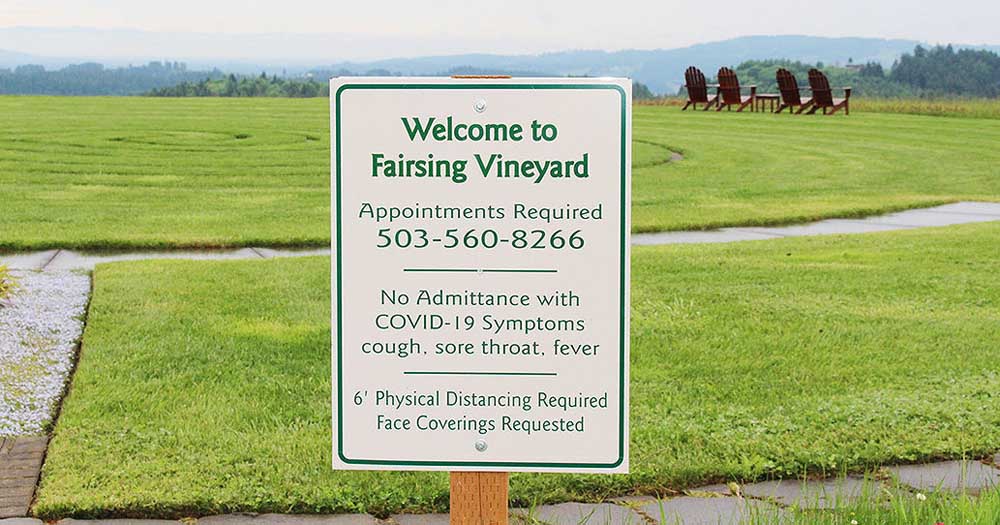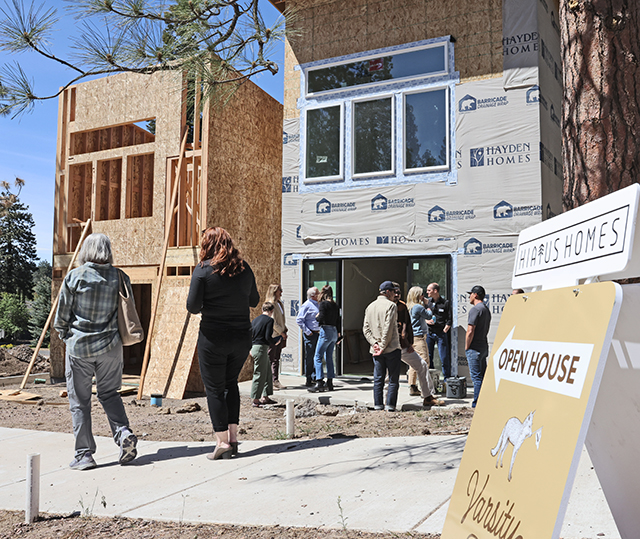Oregon winery tasting rooms gear up for gradual reopening
Published 3:00 pm Monday, May 18, 2020

- {photoSource}capitalpress.com{/photoSource} A sign at Fairsing Vineyard in Yamhill, Ore. reminds guests of changes to the tasting room structure, including a new reservation-only model and enforced social distancing.
YAMHILL — At Fairsing Vineyard on Saturday, visitors arrived in masks. A sign at the property’s entrance warned groups to keep 6 feet apart. Once seated in the tasting room alongside companions, guests took off masks to taste Oregon pinot noir, chardonnay and rosé.
Fairsing Vineyard’s wine tasting room in Yamhill was one of many that reopened over the weekend. According to Sally Murdoch of the Oregon Wine Board, wineries are gradually reopening in 28 of Oregon’s 36 counties. But the sanitized experience is very different than before COVID-19.
May 7, Oregon Gov. Kate Brown announced plans for the state’s Phase 1 reopening after nearly two months of lockdown. Some Oregon wineries and tasting rooms reopened as early as Friday, May 15,; some are gearing up to open soon, and others are waiting until Phase 2 or later.
“It’s a slow reopening. I anticipate every week we’ll see more and more people deciding to reopen,” said Morgan McLaughlin, associate director of the Willamette Valley Wineries Association.
Many winery owners are eager to reopen because COVID-19 closures have devastated revenues.
Data from Nielsen, a marketing research firm, show that during the lockdown, Oregon wine was up 52% in retail sales. But McLaughlin said the closures hit many wineries with a “double whammy” because both their direct-to-consumer and restaurant markets were closed.
Fairsing Vineyard is a direct-to-consumer -only business, relying on its wine club and tasting room for income. Mike McNally, CFO of Fairsing Vineyard, said the business lost $100,000 to $150,000 in two months and predicts revenue will be down at least 75% for months to come with their new reservation-only business model.
“Basically, COVID just gutted our business,” said McNally.
Like restaurants, wineries opening in Phase 1 must follow specific guidelines, including limiting the number of customers on -site at a time, keeping tables and groups at least 6 feet apart, limiting parties to 10 or fewer people, prohibiting bar counter seating and encouraging guests to wear masks unless seated at their table.
To keep tasting rooms from getting overcrowded, McLaughlin said, many wineries have changed to reservation-only.
“That’s a totally new business model to many folks, so they’re scrambling to get their ducks in a row,” she said.
Many wineries are going above and beyond the governor’s recommendations, said McLaughlin.
Mary Ann and Mike McNally, CEO and CFO of Fairsing Vineyard, have dramatically changed their sales model and wine room structure so both employees and guests will feel safe. For example, they have put up signs on the property, staggered visitation hours, removed all upholstered furniture and stopped polishing wine glasses to limit touching.
Many wine tasting rooms across the state, like Winderlea Vineyard and Winery in Dundee are waiting to reopen. Industry leaders say many winery owners are nervous about reopening and are waiting at least 21 days, perhaps more, to keep tasting room staff and consumers safe.
To help consumers find which wineries statewide are or will open, the Oregon Wine Board will soon publish a list of open tasting rooms.
For a list of open Willamette Valley tasting rooms only, the Willamette Valley Wine Association has a resource page with a map at: willamettewines.com/latest-statements-covid.
Industry leaders say visitors should call ahead before visiting any winery.






